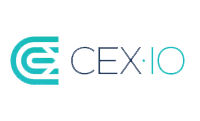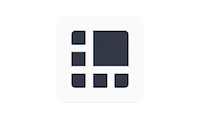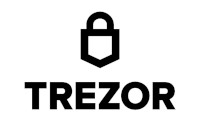How to Buy Bitcoin in 2024 – A Beginner’s Guide
By: Alexander Reed | Last updated: 2/15/24
Looking to buy Bitcoin but don’t know where to start? You’ve come to the right place. By the end of this post, you’ll know everything you need to know about buying Bitcoin safely and quickly.
How to Buy Bitcoin Summary
Here’s a quick guide for buying your first Bitcoin:
- Step 1 – Get a Bitcoin wallet
- Step 2 – Locate your Bitcoin address
- Step 3 – Navigate to an exchange (Binance, for example)
- Step 4 – Binance offers crypto purchases with credit/debit cards (and other payment methods)
- Step 5 – Enter your Bitcoin address and payment information to complete your purchase
The Bitcoin will be sent to your wallet within a matter of minutes. If Binance doesn’t work out for you, here are some additional, reputable options:
eToro disclaimer: This ad promotes virtual cryptocurrency investing within the EU (by eToro Europe Ltd. and eToro UK Ltd.) & USA (by eToro USA LLC); which is highly volatile, unregulated in most EU countries, no EU protections & not supervised by the EU regulatory framework. Investments are subject to market risk, including the loss of principal.
76% of retail investor accounts lose money when trading CFDs with this provider. You should consider whether you can afford to take the high risk of losing your money.
CFDs are not available to US customers.
Don’t invest unless you’re prepared to lose all the money you invest. This is a high-risk investment and you should not expect to be protected if something goes wrong. Take 2 mins to learn moreThat’s how to buy Bitcoin in a nutshell. If you want a detailed explanation of each step and additional buying options, keep reading. Here’s what I’ll cover:
- When Should I Buy Bitcoin?
- Where Can I Purchase Bitcoin?
- Choosing a Payment Method
- Choosing a Bitcoin Wallet
- How Much Bitcoin Should I Buy?
- Additional Buying Options
- Conclusion and Resources
Don’t like to read? Watch the video version of this guide:
1. When Should I Buy Bitcoin?
One of the main questions people ask me is, “Is this the right time to buy Bitcoin?”
The problem is that there’s no good answer to this question, and it really depends on the reason that you’re buying Bitcoin.
If you’re looking to trade Bitcoin (meaning buy low and sell high) and are in it for short-term gain, you’ll probably need to get familiar with different Bitcoin trading techniques and try to time the market (personally, I avoid these methods).
If, on the other hand, you’re into Bitcoin for the actual technology and believe that Bitcoin has a bright future, there are two ways you can go about this:
Dollar Cost Averaging (also known as DCA)
DCA means you buy Bitcoin at a fixed amount on a certain date recurrently, regardless of the price. This way, you are averaging out the fluctuations in the exchange rate. Here’s a short explanation of the process:
Buy regardless of the price
Long-term believers argue that it doesn’t matter if you buy now or when the price is $100 or even $1000 lower. In the long term, the price will go up and make these differences seem unimportant.
If you’re just starting out, I suggest going with DCA since it will help you get into the process easier and then decide if you want to change your strategy.
2. Where Can I Purchase Bitcoin?
Choosing a Bitcoin exchange is hard work. Each exchange has different rules, accepted payment methods, fees, and other factors to consider. Here’s what you need to look out for if you want to do your own due diligence:
Countries supported – Not all exchanges accept customers from all around the world.
Accepted payment methods – Some exchanges accept a wide variety of payment methods, and some accept only wire transfers.
Fees – There are four kinds of fees: deposit fees, transaction fees, withdrawal fees, and Bitcoin network fees. Each one is different and can affect the total amount of money you’ll receive in the end.
The exchange rate – Exchange rates vary between exchanges (which leaves room for arbitrage). In the end, the combination of exchange rate and fees determines the final price you’ll pay. For example, some exchanges have low fees but very high exchange rates, making them unattractive choices.
Buying limits – Your buying limit will depend on your payment method and an identity verification process. If you’re looking to buy a large amount of Bitcoin, some exchanges won’t allow it due to their buying limits.
Exchange reputation – Some questions to ask yourself before depositing money at an exchange are: How reputable is this exchange? How well is the support in the event you get lost in the process? Have there been a large number of complaints against the exchange?
Keep in mind that no exchange is free of negative reviews, but it’s important to consider the volume and content of those reviews.
Types of exchanges
To help you find the right exchange, we need to make a distinction between brokers, trading platforms, and P2P platforms.
Brokers
Brokers are sites that allow you to buy coins via their platform at a set price determined by the platform. While being more expensive than other types of exchanges, brokers are the most simple to use and are, therefore, very popular. Examples of brokers are Coinmama and Coinbase.
Trading platforms
Simply put, trading platforms connect buyers with sellers indirectly. Sell orders are placed by sellers and picked up by buyers, with no direct communication between the two parties. A small fee is charged by the platform for providing the service.
Trading platforms, such as Bitstamp or Kraken, to name two, are usually the cheapest way to buy Bitcoin However, they are not the most user-friendly.
For one, order fulfillment is dependent on finding sellers willing to meet your offered price, which might take time. Additionally, some platforms, like Mexc offer advanced trading options such as stop losses or limit orders, which might confuse trading newbies.
P2P platforms
Unlike trading platforms, P2P platforms enable buyers to communicate directly with sellers and vice versa. This direct communication allows the two parties to negotiate over the price.
However, this direct communication involves risk since you are essentially sending money to an anonymous seller. On the upside, P2P platforms usually have benefits such as availability in multiple countries, more payment methods, and the like. Two examples of prominent P2P platforms are Paxful and LocalCoinSwap.
Convenience stores and pharmacies
Cash purchases of Bitcoin can be made at retailers partnered with LibertyX, a well-known Bitcoin ATM company.
LibertyX has partnered with CVS, Walgreens, Costco, Dunkin’ Donuts, and Rite Aid pharmacies to provide Bitcoin in exchange for cash, with a daily limit of $500. Each purchase is charged a $4.95 retailer service fee. Cash is the preferred method accepted. Certain LibertyX machines accept debit cards with 8% or 9% fees.
Where is the Best Place to Buy Bitcoin?
Regardless of the platform you choose, the main thing that matters is that you’re happy with your price and that you’ve found a reliable service to handle your business. As for me, I prefer to pay a little more for a quicker, more reliable, and hassle-free service.
3. Choosing a Payment Method
It may surprise you, but one of the more crucial deciding factors of how much you’re going to pay for your Bitcoin is going to be your payment method, and there’s a good reason for this.
Chargebacks Explained
Whenever a seller accepts any form of payment that isn’t hard cash for buying Bitcoin, they are exposed to the risk of a chargeback. A chargeback basically means that I, as the buyer, can complain to my payment provider (e.g., PayPal, Visa, Mastercard, etc.), claiming that I didn’t receive what I paid for or that something else was not to my liking, and I would like a refund.
If this happens, the credit card companies may open an investigation, but more often than not, they’ll just go with the buyer’s version. Understandably, this is why it’s harder to find places that will sell you Bitcoin using a payment method that allows chargeback – like a credit card, for example.
Let me explain this with a short example:
Let’s say I want to buy from you a single Bitcoin and pay you via my PayPal account.
We agree on a price: I pay you, you send me the Bitcoin. Now you have my money, and I have your Bitcoin.
Assuming I am a scammer (for argument’s sake), a day after our deal, I contact PayPal and say, “I gave this guy money for Bitcoin and never received them.”
Since PayPal has no way of checking if that’s true or not (since Bitcoin transactions are hard to trace, just like cash), it’s highly likely that PayPal will issue a chargeback and refund me. This way, I get both the BTC and my money back. You (i.e., the seller) will be left with nothing.
Because of this, most exchanges won’t allow the purchasing of Bitcoin with payment methods that allow chargebacks. However, some exchanges will take this risk upon themselves but for a premium—plus a demand that you verify your identity.
Top Payment Methods for Buying Bitcoin
Credit Cards and Debit Cards
These are probably the most common payment methods available. These days, many exchanges allow you to purchase Bitcoin with a credit card. The main ones are Coinmama and CEX.IO.
Buying Bitcoin with a credit card will always require some sort of identity verification and, in most cases, will be relatively expensive. On the other hand, the verification process is just a one-time thing, and the waiting time for your Bitcoin will likely be short.
PayPal and Skrill
At the time of writing this guide, it’s still against PayPal’s terms of use to sell Bitcoin in exchange for PayPal credit. The same goes for Skrill, which is a service that’s somewhat similar to PayPal.
However, there are some ways that allow you to buy Bitcoin with your PayPal balance—you can read all about buying Bitcoin with PayPal here, and here’s a guide for buying BTC with Skrill.
Wire Transfers
When Bitcoin is bought with a wire transfer, once the money goes through to the seller, it cannot be charged back, no matter what. Naturally, many sellers prefer that you pay them using a wire.
Wire transfer purchases will usually cost less than credit card purchases. However, the time it takes for the transaction to complete using a wire transfer is significantly longer, as it takes several days for a wire to go through.
Cash
Some websites, such as Paxful, connect buyers and sellers who are located nearby in order to conduct face-to-face Bitcoin transactions. Of course, buying Bitcoin with cash (or fiat currency, as it is referred to in the Bitcoin ecosystem) is quick and usually cheaper.
The downside to conducting transactions with cash is that you have to meet with the person physically. Also, you never know who you are dealing with when it comes to cash, so it’s important to take the appropriate steps to protect yourself.
KYC
No matter what payment option you choose, you’ll probably be required to provide some personal details, such as your registered address and ID. In some cases, you might even be required to provide details about your income. Don’t take this personally!
This process, known as Know Your Customer (KYC for short), is required by the government and enforced by the exchanges, probably against their will. The good news is that such regulations are the outcome of Bitcoin becoming more mainstream.
4. Choosing a Bitcoin Wallet
Bitcoin needs to be stored inside a Bitcoin wallet. A Bitcoin wallet is a piece of software that helps you manage your Bitcoin (i.e., send them, receive them, store them). Just like in order to use email, you need Gmail, Outlook, or a similar program, using Bitcoin requires a Bitcoin wallet.
When you buy Bitcoin from an exchange, it’s highly recommended that you move it from the exchange into your own personal wallet so that you will be in full control over your coins.
If you fail to do so, you are at risk of losing your coins in case someone hacks the exchange or even if the exchange closes down (hey, it happened before).
There are numerous popular Bitcoin wallets you can use, and it can get a bit overwhelming trying to compare all of them. Here are the most popular options around:
Bitcoin address and Private Key
A wallet usually holds two important pieces of information:
Your private key – Also known as a seed phrase. This is like the password to your wallet. Whoever knows this can get control of your Bitcoin, so it needs to be kept safe and hidden at all times (and definitely not on a file on your computer or in the cloud).
Your Bitcoin address – Just like your email address, this is where people can send you Bitcoin. It’s a string of letters and numbers that start with a “1”, “3” or “bc1.” Here’s an example: 1BvBMSEYstWetqTFn5Au4m4GFg7xJaNVN2. It can be displayed publicly, and there’s no need to hide it.
Types of Bitcoin wallets
There are several aspects you need to be aware of when it comes to Bitcoin wallets.
Non-Custodial
A non-custodial wallet means that you are the sole owner of your Bitcoin and that you are not putting your Bitcoin in the hands of any third party.
There are many types of non-custodial wallets. For example, the first Bitcoin wallet ever to be produced, known as the Bitcoin Core wallet, is a non-custodial wallet.
Even though using a non-custodial wallet is considered to be more secure, it also means that you are the only one responsible for your coins’ security, so you need to take the appropriate measures (keep reading—I’ll get to that as well).
Non-custodial wallets are linked to a specific device, such as a laptop or phone, and can only be accessed via that device.
Another thing to take into account is that non-custodial wallets are usually harder to set up than third-party wallets (also known as custodial wallets). Additionally, if you lose the private key to your non-custodial wallet, you lose your coins. No one will be able to get them back for you (just ask this poor fellow).
Custodial wallets
Third-party wallets, also known as custodial wallets, are controlled by someone other than you. This will usually be some sort of company or exchange.
Using this type of wallet is usually easier since they are often more geared toward beginners. You can also access it from anywhere on the web. However, this also makes them more prone to hacking.
When using a custodial wallet, you’re putting the fate of your coins into someone else’s hands. That’s why it’s important only to use trusted third-party wallet providers.
Most third-party wallet companies today take sufficient security measures in order to ensure that no one hacks your account. One of these measures is called Two-Factor Authentication (or 2FA for short).
Using 2FA helps the wallet verify your identity by asking you to enter not only your username and password but also a one-time password (OTP) that is sent to a device you own via a text message, email, or 2FA code generator like Google Authenticator, Microsoft Authenticator or others.
Multi-Signature Bitcoin wallets
A multi-signature wallet (also known as a multisig wallet) is a wallet that has more than one owner, and the coins inside that wallet can only be accessed if a preset number of owners agree to it.
For example, let’s say a company opens a multisig wallet with three owners: the CEO and two other managers. They set the rules for this specific wallet so that it takes at least two owners to authorize a transaction. If the CEO wants to send Bitcoin to someone from this wallet, they need to get at least one other manager on board.
Multisig wallets are considered more secure because even if one of the keys to the wallet is stolen, there’s usually no way to drain the wallet’s funds without the other owners’ approval.
A good way to use a multisig wallet would be to give two keys to yourself and one to someone you trust so that if one key gets stolen, your Bitcoin is still safe and accessible. Some wallets, like Electrum, have the option to enable multisig.
Paper and physical wallets
Bitcoin can also be stored on physical items such as flash drives, dedicated Bitcoin hardware wallets (e.g., TREZOR or Ledger), and even on paper.
Yes, paper.
At its core, a Bitcoin wallet is just a set of letters and numbers, like a secret code to access your Bitcoin—also known as a private key. If you write that “code” down on paper, you can create what is known as a paper wallet.
An example of a Bitcoin paper wallet
Hardware wallets are devices that hold your private key for you. They are considered to be ultra secure since they are not connected to the internet and can even be run safely on infected computers due to their design.
Types of hardware wallets
Hardware wallets and paper wallets are actually a subset of non-custodial wallets. They present the best form of security and control you can have over your Bitcoin.
How to choose the right wallet?
Choosing the right wallet depends on several factors. Keep in mind that it’s pretty easy to switch between wallets, so it’s not a life-or-death decision. Here are the factors I would consider when choosing my wallet.
Frequency of use
How often are you planning on sending Bitcoin? Notice that I ask only about sending Bitcoin, as receiving Bitcoin is pretty much the same for all types of wallets.
If you think you’re going to be a heavy Bitcoin user, I suggest using a wallet that is easily accessible on your mobile phone so that it will always be available (e.g., Ledger Nano X, Edge).
However, if you’re buying Bitcoin as a long-term investment, I suggest using a hardware or paper wallet, as it’s the most secure option.
How much Bitcoin do you plan on owning?
If you’re just going to buy a small amount of Bitcoin, then it doesn’t really matter which wallet you use since the risk isn’t that big. However, if you’re planning to buy large amounts of Bitcoin, you may want to consider using a multisig wallet or a hardware wallet, both of which are considered to be safer in general.
User-friendliness
How easy is it to access the wallet, send Bitcoin, and receive funds? Some wallets have a great user interface, while others tend to lag behind with interfaces that will scare any new Bitcoiner away.
Personal paranoia and anonymity preferences
How paranoid are you about someone stealing your Bitcoin? How concerned are you about your anonymity? Some wallets also focus on complete anonymity and privacy (e.g., Samourai and Wasabi wallets).
5. How Much Bitcoin Should I Buy?
Picked up a wallet? Found your preferred way to buy Bitcoin? Good! You now need to ask yourself a very important question: how much money do you intend to invest in Bitcoin?
Bitcoin is a VERY risky asset. This means you should never buy any amount you can’t afford to lose. It’s important to think this through. If this is your first time buying Bitcoin, choose an amount that won’t affect you financially if Bitcoin drops to zero.
In general, we tend to be overly optimistic when investing, and we can forget about the real possibility of a downside. My rule of thumb is never to invest more than 5% of my disposable income or total wealth.
How Much Does it Cost to Buy 1 Bitcoin?
At the moment, the price of Bitcoin is 61,585 US dollars.
The price varies depending on how much it is in demand. The more people are looking to buy, the higher it will cost. If no one wants to buy, the price will decrease until someone thinks it’s cheap enough. Price can also vary a little between exchanges.
Can I Buy Less Than 1 Bitcoin?
Yes, you can buy less than 1 Bitcoin. A Bitcoin can be divided up to eight decimal points. This means that you can buy half a Bitcoin, one-quarter of a Bitcoin, or even one-hundredth of a Bitcoin. The smallest amount of Bitcoin is known as a “Satoshi,” and it equals 0.00000001 Bitcoin.
Buying large amounts of Bitcoin
If you’re looking to buy large amounts of Bitcoin—let’s say over $10,000 worth—there are specific exchanges and brokers that deal in these sorts of transactions. These services are known as OTC (Over-the-counter).
6. Additional Buying Options
If all I’ve covered above just doesn’t work for you, here are a few additional options for buying Bitcoins.
Bitcoin ATMs
Bitcoin ATMs are machines that accept cash (fiat currency) or, in some cases, debit cards and provide Bitcoin in return. Some ATMs allow you only to buy Bitcoin, while others will also allow you to sell your Bitcoin and get cash in return.
Many people love to use ATMs because of the relative anonymity throughout the purchasing process. You don’t have to wait for long identity verification processes to finish. Just insert your money and get your coins instantly.
Bitcoin ATMs are run by companies that usually charge a specific fee for their services, so make sure you’re aware of the fees before making the transaction.
Look for Bitcoin ATMs near you on CoinATMRadar.
Buying from individuals
Some people will prefer to buy Bitcoin from an individual and not an exchange. In this case, there are a few things to watch out for:
Try to see if you can verify the seller’s identity. Some people will want to remain anonymous, and that’s fine, but verifying someone’s identity will dramatically reduce your risk of being scammed.
Try to use some sort of escrow service that will hold your money until the seller sends you the coins. If that’s not possible, stick to cash and meet with the person face-to-face. In any case, never use irreversible payment methods such as wire transfers before receiving your coins.
You’ll want to wait for the Bitcoin transaction to have at least two to three confirmations before considering the deal complete. Of course, this depends on the amount of money you’re exchanging. Smaller amounts can be done with only one confirmation.
Keep in mind that buying from an individual usually involves a lot of uncertainty, and sometimes it’s just not worth the few bucks you’ll save in the process.
7. Conclusion and Resources
You’re now ready to go and buy your first Bitcoin. You can use the resource list below if you’re looking for guides for a specific payment method.
Also, if you found this guide informative, we’d appreciate you helping us spread the word about 99Bitcoins and sharing it on Facebook or Tweeting about it.
P.S. – I know I already wrote this at least three times throughout this guide, but I can’t emphasize this point enough: If Bitcoin’s history has taught us anything, it’s that as long as you keep your money on an exchange, you don’t actually own that money—the exchange does.
If the exchange becomes insolvent or gets hacked, you risk losing that money for good. This has happened in the past with MT.Gox, BTC-e, and Bitfinex.
Once the coins are in your exchange account, make sure to withdraw them to the Bitcoin address you’ve copied from your wallet. After the coins arrive safely in your wallet, you can proudly say that you’ve bought your first Bitcoin.
Good luck!
Resource Section
If you feel that you still need additional assistance, you can use the following step-by-step buying guides for the different payment methods:
- How to Buy Bitcoin with PayPal
- How to Buy Bitcoin with a Credit Card
- How to Buy Bitcoin with a Wire Transfer
- How to Buy Bitcoin with Cash
- List of Verified Bitcoin Exchanges
- Recommended Hardware Wallets
- Recommended Wallets for iPhone
- Recommended Wallets for Android
- Recommended Wallets for Desktop
- Buying Large Amounts of Bitcoin Guide
- List of Bitcoin ATMs













Nice
Yes nice
Good lecture. My question is, if I withdraw some of my Bitcoin into the wallet for safety, is the amount withdrawn still trading for profit on the exchange platform ?
Many thanks
Hey there! Your videos and explanation are great!
One very beginner question. Everywhere says that you need to wait for a confirmation when buying Bitcoin, or that you have to pay to put your transaction in the Blockchain. But why buying with an Exchange is so fast? I mean, you send fiat, press buy and it is done. What is different? Is this transaction really in the blockchain?
This is a blockchain transaction. Typically, exchanges are fast because they have direct access to chains and they have their own crypto supplies. In addition, they are licensed businesses, which means things are going to operate a little differently with them than if just two third parties were engaging in a private transaction.
I want to buy bitcoin
Nice
Great expectation
hi im a new hear canyou explain to me what to do
We cannot give investment advice as we are not brokers, nor are we certified financial planners. However, we recommend that you watch all our videos and read all our content so that you get an idea of how the space works. From there, if you are interested in starting your trading journey, you may want to do so through a regulated exchange. Welcome to the crypto space!
hello